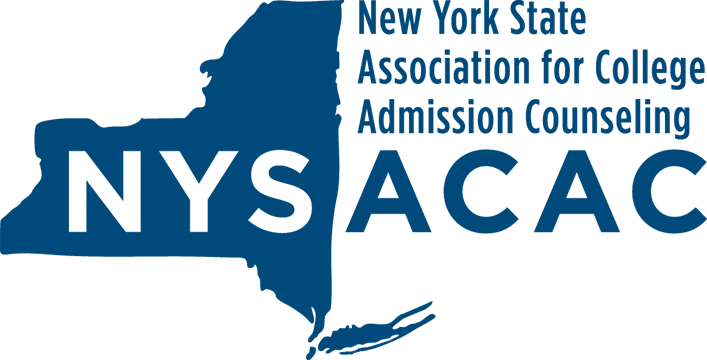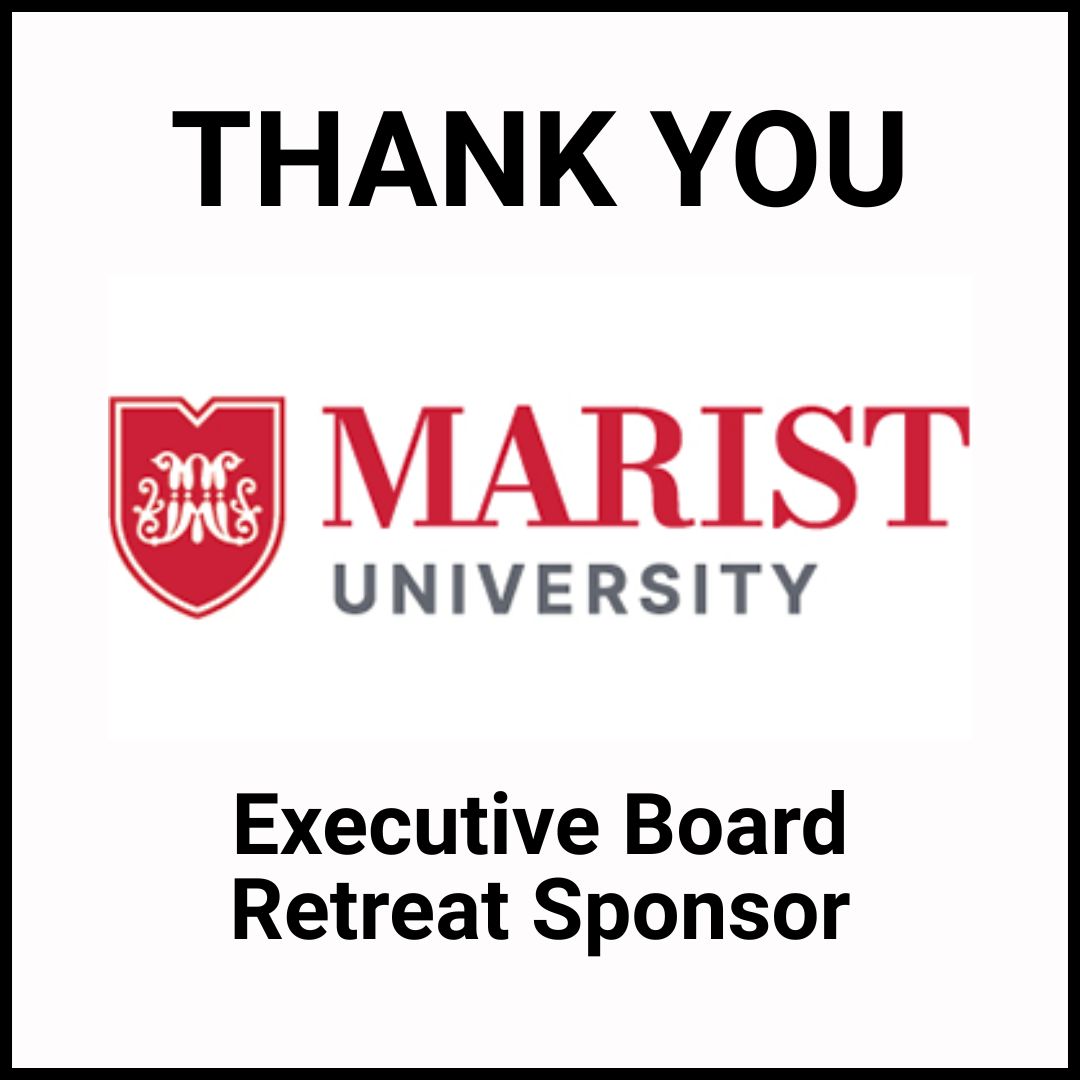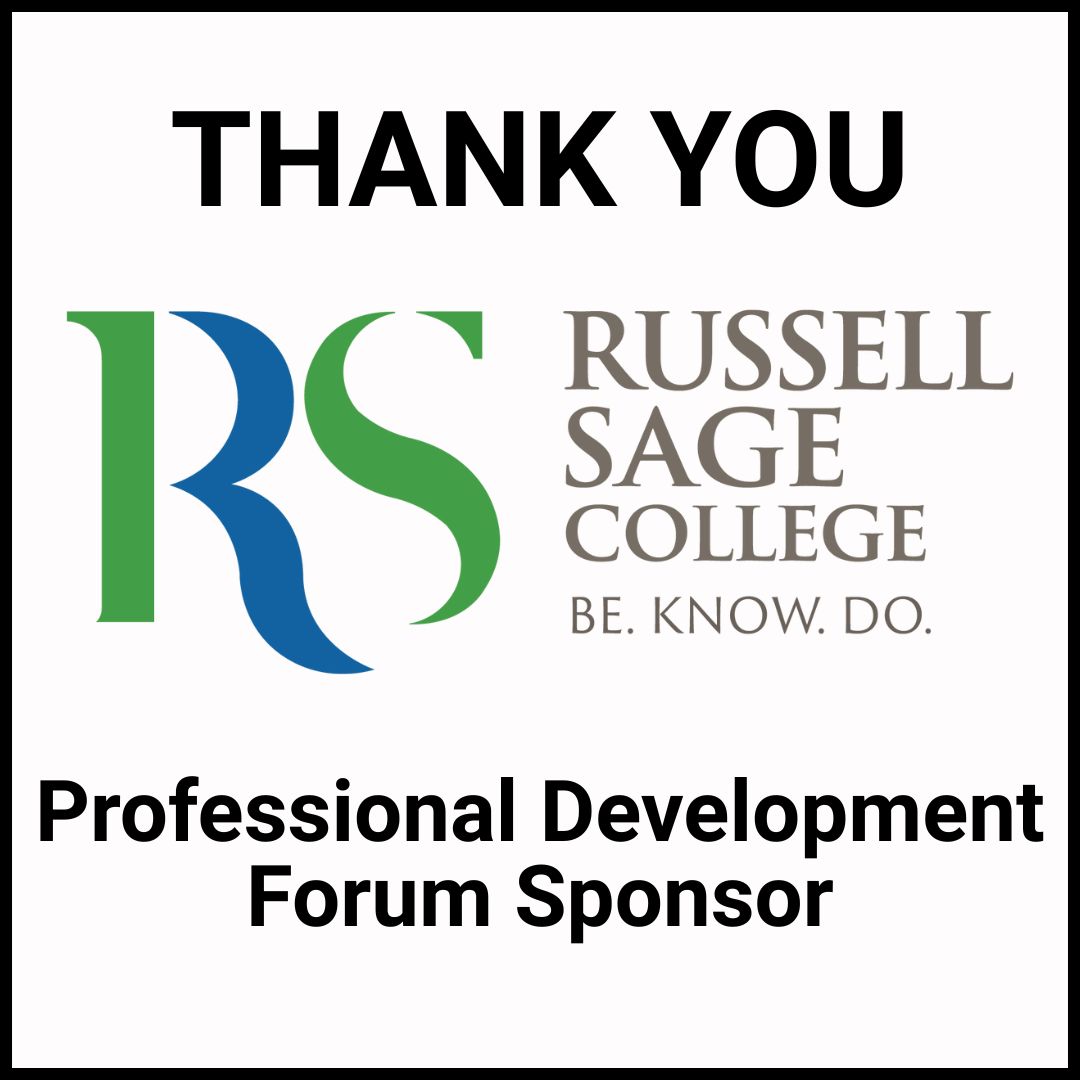- Home
- About
- News
- Government Relations
- Professional Development
- Community Outreach
- Donate
- Membership
NYSACAC BYLAWS*Table of Contents:
*Approved June 5, 2025
Article I: PurposeSection 1: The purposes for which the New York State Association for College Admission Counseling (NYSACAC) or the “Association” is organized and operated are educational and charitable as defined under the New York Not-for-Profit Corporation Law (N-PCL) and the Internal Revenue Code (IRC). The Association is composed of institutions, organizations and individuals dedicated to serving students as they explore options and make choices about pursuing postsecondary education. NYSACAC is committed to maintaining high standards that foster ethical and social responsibility among those involved in the transition process. Article II: MembershipSection 1: Voting membership within NYSACAC shall be extended to those who support the purpose and mission of NYSACAC as well as the National Association for College Admission Counseling (NACAC). They include:
Section 2: Each voting member shall have one vote on all matters which shall require action by the full membership at any General Membership meeting. Representatives of voting NYSACAC member institutions and individual voting members may serve as co-chairs and officers of NYSACAC and members of committees. Non-voting members may not serve as co-chairs and/or officers or committee members of NYSACAC. Section 3: Honorary membership may be extended to anyone who is recommended by the President and approved by majority vote of the Executive Board. Section 4: Lifetime emeritus membership may be extended to anyone who is recommended by the President and approved by a majority vote of the Executive Board. This person shall receive lifetime membership in NYSACAC and is deemed a voting member. This is not necessarily an annual award Section 5: Any membership in NYSACAC may be terminated by a vote of two-thirds (2/3) of the Executive Board for:
Section 6: The membership year will be from September 1 through August 31. Section 7: Non-Voting Membership Categories
Article III: Membership MeetingsSection 1: A General Membership Meeting of the voting members of NYSACAC shall be held during the NYSACAC Annual Conference for the purpose of announcing officers and Representatives (as defined herein) and transacting such other business as may properly come before the voting members. Written notice of the General Membership Meeting shall be given personally by mail or electronic transmission to each voting member at least thirty (30) but no more than fifty (50) days before such meeting. Formal notice need not be given if a voting member executes a waiver of notice either before or after the meeting. If a person attending a meeting does not contest a purportedly invalid notice provided for that meeting, any right to do so is hereby waived. Section 2: Special meetings of the voting members may be called by the Board or by the President or, at the written request of ten percent (10%) or more of the voting members, shall be called by the President or Secretary of NYSACAC on behalf of the voting members. Written notice of each special meeting shall be given personally by mail or electronic transmission to each voting member, in the manner provided by these Bylaws, at least thirty (30) but no more than fifty (50) days before such meeting. Section 3: At all meetings of the members, twenty percent (20%) of the total number of voting members in good standing, represented in person or by proxy, shall be necessary and sufficient to constitute a quorum for the transaction of business. Each voting member shall have one vote. A vote of the majority of the voting members, represented in person or by proxy, at any meeting at which a quorum is present, shall be the act of the voting members, except as otherwise provided by these Bylaws or by law. If a quorum is not present at any meeting, the voting members present at the meeting may adjourn the meeting from time to time, without notice other than an announcement at the meeting, until a quorum shall be present. Section 4: At each meeting of the voting members, a voting member may vote in person, virtually, or by proxy. Every proxy shall be in writing, subscribed to by the voting member to whom it pertains, or a duly authorized representative thereof, and dated. Such writing may be electronic. No proxy which is dated more than eleven (11) months before the meeting at which it is offered shall be accepted, unless such proxy shall, on its face, name a longer period for which it is to remain in force. Every proxy shall be revocable at the pleasure of the voting member, except as otherwise provided for under New York State law. Section 5: The President shall preside at all meetings of the voting members. At any General Membership Meeting, if the President or the person designated by the Board to preside at that meeting is not present, the President-Elect shall act as the presiding officer for such meeting. If the person designated by the Board to act as Secretary at that meeting is not present, the President shall appoint a Secretary for such meeting. Section 6: The Executive Board of NYSACAC shall present at each General Membership Meeting a report, verified by the President and VP for Finance or by a majority of the Executive Board, or certified by an independent public or certified accountant or a firm of such accountants selected by the Board, showing in appropriate detail the following:
Each such report shall be filed with the records of NYSACAC and a copy or an abstract thereof shall be entered in the minutes of the proceedings of the annual meeting at which the report is presented. Article IV: Executive BoardSection 1: Except as otherwise provided by law or these Bylaws, the Executive Board or the “Board” is the governing body of NYSACAC, with all powers of governing, directing, and overseeing the management and affairs of NYSACAC as provided in the N-PCL. Section 2: The Executive Board of the Association shall consist of the officers of the Association described in Article V below and Representatives. All officers and Representatives must have their NYSACAC membership current and in good standing. Failure to renew one’s NYSACAC membership may result in removal from the Board. Section 3: Vacancies in Representative positions shall be filled by appointment by the Immediate Past President and approval of the Board. Such appointed term shall last until the next General Membership Meeting at which time voting members shall approve the member to complete the vacant term. Section 4: Meetings of the Board, regular or special, may be held within or outside of the State of New York upon not fewer than ten (10) days notice to each officer, either personally or by mail, telephone, facsimile, or e-mail, subject to waiver of notice as provided in the N-PCL. Neither the business to be transacted at nor the purpose of, any regular or special meeting of the Board need be specified in the notice or waiver of notice of such meeting. Regular meetings shall be held at least four (4) times each year or more often as established from time to time by resolution of the Board, or as required by the business of NYSACAC. Special meetings of the Board may be called by the President at any time and shall be called by the President upon the written request of a majority of the officers then in office. Section 5: A majority of the members of the Board then in office shall constitute a quorum for the transaction of business. The act of the majority of the Board present at a meeting at which a quorum is present shall be the act of the Board. If a quorum is not present at any meeting of the Board, the members present may adjourn the meeting without notice other than announcement at the meeting, until a quorum is established. Each member of the Board shall be entitled to one (1) vote on each matter properly submitted to the Board for action at all meetings of the Board. Section 6: Any action required or permitted to be taken at a meeting of the Board may be taken without a meeting by consent in writing, setting forth the action so taken, which shall be signed by all the members of the Board. Section 7: At the discretion of the officers, any one or more members of the Board may participate in a meeting of such Board by means of a conference telephone, virtual platform, or similar communications equipment allowing all persons participating in the meeting to hear each other at the same time. Participation by such means shall constitute presence in person at a meeting. Section 8: Subject to Article V Section 1 below, each officer shall be elected to a full term, or such term as a majority of the Board may otherwise determine and shall serve until his or her successor has been elected and qualified. Section 9: At any duly called meeting of the Board at which there is a majority of the members of the Board then in office, any member may be removed from office for cause by a vote of two-thirds (2/3) of the members of the Board present at the meeting, and another may be elected by a vote of the majority of the members of the Board in the place of the person so removed to serve until the next General Membership Meeting at which election of officers is in the regular order of business. Section 10: An officer may resign at any time by written notice delivered to the President or Secretary. A resignation is effective when the notice is delivered unless the notice specifies a date later than the date of delivery. The resignation of the officer need not be accepted in order to be effective. Section 11: Members of the Board shall not receive any compensation for their services. Nothing in this section shall prevent compensation to a person for services rendered to NYSACAC as an employee. Members of the Executive Board may be reimbursed for the expenses reasonably incurred by them in the performance of their duties. Article V: OfficersSection 1: The officers of the Association and their respective term of office are:
Section 2: Other than the Vice President for Professional Development and Planning, the Vice President for Impact and Success, the Vice President for Communications and the Secretary, no officer may serve consecutive terms in the same office. Vice Presidents and Secretary may serve no more than two consecutive terms in the same position. Section 3: All officers must be NYSACAC members in good standing and employed in the profession during their service. The President, President-Elect, and Immediate Past President must also be NACAC voting members in good standing. Section 4: The responsibilities of the officers shall be determined by the Board as set forth in the Policies and Procedures Manual. Section 5: Vacancies in an office shall be deemed to exist when a member of the Executive Board is no longer able to serve for any reason, or no longer meets the eligibility requirements as established by the Bylaws. Vacancies in the offices shall be filled as follows:
Section 6: Executive Board members must be employed within the profession at the time of election. Executive Board members who cease to be employed in the profession must renew their membership as described in Article II immediately. If an elected board member fails to secure a position within the profession after one full membership cycle, the individual must resign. Article VI: RepresentativesSection 1: The membership will elect the appropriate number of Representatives as deemed by the Executive Board. Each elected representative shall serve a term of three (3) years and shall take office at the conclusion of the Annual Conference. Representatives must have their NYSACAC membership current and in good standing. Failure to renew one’s NYSACAC membership may result in removal from the NYSACAC Board. Section 2: The NYSACAC duties of each representative shall include service on the NYSACAC Executive Board according to the NYSACAC Policies and Procedures manual. Section 3: A Representative may resign at any time by written notice delivered to the Immediate Past President or Secretary. A resignation is effective when the notice is delivered unless the notice specifies a date later than the date of delivery. The resignation of the Representative need not be accepted in order to be effective. Section 4: A Representative may be removed without cause by the voting members, and shall be filled by appointment by the Immediate Past President and approval of the Board. Such appointed term shall last until the next General Membership Meeting at which time voting members shall approve member to complete the vacant term. Article VII: Fiscal PoliciesSection 1: The dues of each class of membership in the Association shall be established by the VP for Finance and Executive Board and assessed on an annual basis. Section 2: The fiscal year shall be from January 1 through December 31. Section 3: Upon dissolution of NYSACAC, all assets will be contributed to NACAC, provided that at the time of dissolution NACAC is deemed a tax-exempt organization by the Internal Revenue Service described in Section 501(c)(3) of the Internal Revenue Code of 1986, as amended (the “Code”). Section 4: All checks or demands for money and notes or other instruments evidencing indebtedness or obligations of NYSACAC shall be made in the name of NYSACAC and shall be signed by such officer or officers or such other person as the Board may from time to time designate. No loans shall be contracted on behalf of NYSACAC unless specifically authorized by the Board. Section 5: No part of the assets or net earnings of the Corporation shall be distributed to or inure to the benefit of any director or officer by means of dividends or otherwise except that reasonable compensation may be paid for services rendered to NYSACAC. Article VIII: Nominating Committee and Election of Officers and RepresentativesSection 1: The Nominating Committee shall oversee the election of officers and Representatives by the voting members. The Immediate Past President shall appoint committee members who shall be approved by the Executive Board and shall follow the election procedures as described within NYSACAC’s Policies and Procedures. Section 2: NYSACAC is committed to fostering a diverse Executive Board of outstanding professionals, without regard to an individual's race, color, national origin, religion, creed, age, disability, sex, gender identity, sexual orientation, familial status, pregnancy, predisposing genetic characteristics, military status, or domestic violence victim status. NYSACAC members shall not be subjected to harassment that is prohibited by law, or treated adversely, or retaliated against based upon a protected characteristic. Article IX: Committees1Section 1: The Executive Board may designate one or more committees that shall have such name or names as may be determined from time to time by the Board. Committees are not part of the governing body of NYSACAC. Collectively, the committees shall be called “Committee Cabinet.” The Board may appoint committees consisting solely of co-chairs, which committees shall exercise the authority of the Board in the management of NYSACAC. Each such committee shall consist of no more than two (2) co-chairs, and the President shall designate a chair of each committee from among such co-chairs. No committee will have the power to:
Section 2: Other committees not having and exercising the authority of the Executive Board in the management of NYSACAC may also be designated and appointed by the Board. Section 3: All committee chairs and committee members must be NYSACAC members in good standing and employed in the profession during their service. Committee chairs who cease to be employed in the profession must renew their membership as described in Article II immediately. If the appointed chairperson fails to secure a position within the profession after one membership cycle the individual must resign. Section 4: Each appointed Co-chair shall serve a term of three (3) years and shall take office at the conclusion of the Annual Conference. Responsibilities of the Co-chairs and committees are defined in the Policies and Procedures Manual. Section 5: A committee Co-chair may resign at any time by written notice delivered to the President or Secretary. A resignation is effective when the notice is delivered unless the notice specifies a date later than the date of delivery. The resignation of the Co-Chair need not be accepted in order to be effective. The President will appoint a replacement Co-Chair for the remainder of the vacant term. 1Committee charters to be discussed following approval of bylaws. Article X: Parliamentary AuthoritySection 1: In all matters of Parliamentary Procedures, the latest edition of “Robert’s Rules of Order” shall govern all matters of NYSACAC. Article XI: AmendmentsSection 1: The Bylaws may be amended at any General Membership Meeting by a vote of two-thirds (2/3rds) of the members present and voting at a meeting at which a quorum is present, provided that notice of the proposed amendment has been sent to the members at least thirty (30) days in advance of the meeting. An amendment not sent to the members in advance of the meeting as set forth above may be adopted by a vote of four-fifths (4/5ths) of the members present and voting at a meeting at which a quorum is present. Section 2: The Articles of Organization and Bylaws of NYSACAC shall be reviewed annually to ensure that they are consistent with NACAC’S governing documents. Article XII: Indemnification and InsuranceSection 1: NYSACAC may indemnify each person described in Article 7 of the N-PCL, as the same may be amended from time to time, to the fullest extent allowed by the N-PCL. Section 2: The Board may cause NYSACAC to purchase and maintain insurance on behalf of any person described in Article 7 of the N-PCL against any liability asserted against such person and incurred by such person in any such capacity or arising out of such status, whether or not NYSACAC would have the power to indemnify such person. Section 3: All expenses reasonably incurred by an Indemnitee in connection with an actual or threatened action or proceeding with respect to which such Indemnitee is or may be entitled to indemnification under Section 1 of this Article shall be advanced to the Indemnitee or promptly reimbursed by NYSACAC in advance of the final disposition of such action or proceeding, upon receipt of an undertaking by the Indemnitee or on behalf of the Indemnitee to repay the amount of such advances, if any, as to which the Indemnitee is ultimately found not to be entitled to indemnification or, where indemnification is granted, to the extent such advances exceed the indemnification to which the Indemnitee is entitled.
|












